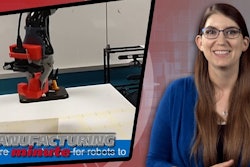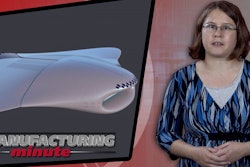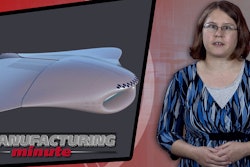The "fourth industrial revolution" is marked by emerging technologies like robotic automation, artificial intelligence and the Internet of Things. The greatest result of this revolution is a dramatic improvement in domestic manufacturing productivity over the past three decades. The Federal Reserve Board chart below shows industrial production since 1920, showing an upward trend over time, with the most dramatic increases in the post-war era and the biggest dip during and just after the Great Recession.
Despite the fact that countries around the world are ramping up their own manufacturing economies, the U.S. created $5.4 trillion worth of goods in 2016 and the domestic manufacturing sector is flourishing and has been for quite some time. While politicians do tend to claim credit, these productivity increases can be attributed specifically to improved “operational fundamentals” and "smart operations" strategies and technologies used in the manufacturing sector.
Manufacturing has not yet hit a plateau, and productivity is continuing to evolve. According to a recent report from UPS, over 50 percent of executives said their operating models were still evolving digitally, with only ten percent saying their business models were fully transformed. As these manufacturers continue to evolve, the next iteration of manufacturing will depend heavily on a combination of technology, strategy, and process, all within a new collaborative environment.
Being predictive in a rapidly changing environment
The key to success in any industry is the ability to know what's coming next. That prescient ability allows manufacturers to know what customers want — not only what they have wanted in the past and want today, but what they will want in the future. What this means to manufacturers is that they must revisit how to continuously improve and gather information so that they can see what customers want on a real-time basis. That continuous data flow allows manufacturers for example, to switch what they're producing, and produce smaller or larger lot sizes in response to demand. And because information and analytics allows manufacturers to produce in respond to timely data on customer demand, there will be lower incidence of wasteful over- or under-production — and a corresponding increase in profitability.
Why is all this important? Big changes usually happen when we are driven by necessity to make them happen. In the postwar era through the 1960s, American manufacturing faced very little competition from the rest of the world, rapid growth was seen throughout, and manufacturers didn't need to do very much to be profitable. Innovation was seen as unnecessary.
Today, the shortage of skilled labor, increased levels of global manufacturing competition and customer demand pushing manufacturers to offer more options and faster delivery are all driving the need for change. Not to mention, macroeconomic factors over which manufacturers have little control — a chronic shortage of shipping options, new tariffs causing a dramatic re-thinking of the supply chain, and the lasting effects of the Great Recession.
In short, today, manufacturers need a new strategy to survive.
At the heart of all this is smart operations, the definition of which is sometimes elusive, but it always centers on the collection and analysis of data, and using that data in productive ways. Alfred Baumbusch, Executive VP Operations, North America at Maine Pointe, defines it as "taking a look at how we can leverage the continued improvement process that started a number of years ago with Six Sigma, through the use of technology such as functional sensors. Affordable technology today can quickly gather and visually present big data in real time that allows management to make faster and better decisions and in turn boost the end to end supply chain in a number of ways such as improving productivity, improving quality, and reducing cost. There has to be a value-added component to it. It shouldn't be just for the sake of capturing data."
Smart operations is a natural outgrowth of lean six sigma, according to Baumbusch, who notes that rather than replacing lean Six Sigma, smart operations complements it, "staying focused on reducing waste and improving productivity and performance overall and improving EBITDA."
Driving a competitive edge
The data being captured through newer technology and the Internet of Things "allows management to make decisions to give them a competitive edge," said Baumbusch. "Ultimately, they can be received through any transmission standard, through Wi-Fi, Bluetooth, radio frequencies, and eventually to a dashboard that can be driven by data analytics software. And it allows leadership to make decisions in real time faster than they were before, to be more predictive, and to get out of their reactive mode."
That competitive edge is gained when the manufacturer changes from being reactive to being predictive — and that predictive mode is enabled when smart operations leverages that data collection and analytics to see when changes are coming faster than the competition. "Smart ops provides value when you can see changes sooner" said Baumbusch. "So for example if you have lost production time caused by unplanned maintenance repairs, smart ops can place your maintenance department into a predictive position that will improve your overall equipment effectiveness and improve on time deliveries to your customers.
It's not just about technology
Big data and analytics, along with other technologies such as blockchain are driving these smart operational changes, giving decision-makers the tools they need to gain insights that may not have previously been visible. But to be complete, smart operations isn't just about the technology, it's also about collaboration and integration. In some ways, smart operations is really smart supply chain, and a collaborative ecosystem with together alliances — not just within the company from IT to the shop floor, but with trading partners as well.
Smart operations really consists of three areas: technology, strategy, people, and process. "Strategy is number one," said Baumbusch, who says technology is a close second, because the technology is now more affordable and readily available than ever. However, it is how you implement smart operations from a process and people perspective that is key to success.
Baumbusch describes a smart operations environment which he refers to as helping achieve "Total Value Optimization," a phrase coined from Maine Pointe's CEO and founder Steve Bowen. According to Baumbusch, Total Value Optimization is achieved when a company is able to anticipate and meet demand through the synchronization of its buy-make-move-fulfill supply chain to deliver the greatest value to customers and investors at the lowest cost to business, "To achieve the ultimate level of productivity and efficiency that is driving the value of EBITDA and profitability." The process includes other strategic practices like continuous improvement.
Within this new smart manufacturing environment, companies have the tools they need, and the partner collaboration that is essential for success. An increasing reliance on partners is essential for this level of success, which according to the UPS report, centers around the fact that most manufacturers are not managing their big data in-house, instead relying on third-party analytics services which can provide greater accuracy and speed. Those manufacturers who look to smart operations, and who use it successfully, are not simply looking towards technological solutions — they are making sure the operational fundamentals are mature, incorporating Lean Six Sigma practices, enhancing their collaborative efforts, forging a tighter and more efficient supply chain with global partners, and leveraging that data to drive better decisions on a continuous basis.
Dan Blacharski is a thought leader and industry observer, and is editor of US News And Review.























